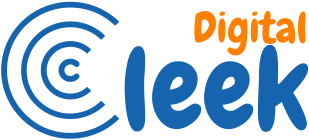Did you know the concept of “booking” office spaces isn’t nascent? In the 1990s, employees working in offices with hot desking did not have a dedicated workspace. Instead, they could take up whatever desk was available at the time. This is essentially what desk booking software offers in the modern context.
As you know, the traditional workspace model is undergoing yet another facelift. There has been a cultural shift in how employees “go to work,” and understandably so. With the pandemic yet to be curbed, a 9-to-5 work in office is no longer a safe – or the desired option – for most employees. According to a report by Accenture, workers are inclined towards a hybrid model 83% of the time.
We’re now looking at companies emerging from traditional office wombs and into a brand-new world of flexible, dynamic, and hybrid work models. This also means organizations need to accommodate employee preferences. Be it:
- Remote work
- In-the-Office work
- Hybrid work
What is Desk Booking Software?
Imagine you’re thinking of eating out at your favorite Italian restaurant over the weekend. Now, you can either make a table reservation in advance or check in directly.
In the first case, you’ll receive a confirmation that your table has been reserved successfully on the restaurant’s second floor as per your specific requirement. Meanwhile, in the second case, you will get a table on a first-come, first-served basis, so you’ll have to take whatever table is available at the time.
A desk booking software works in a similar fashion. It is essentially a sophisticated software crafted using a system of codes that allows employees to book a “desk” or “cubicle” for a day or more depending on need. Workers can also claim a desk through a desk booking software depending on proximity to colleagues or amenities required, such as notepads or desktops.
How Does a Desk Booking Software Work?
A desk booking software allows employees to reserve a workstation at the physical office using any interface.
Whether they prefer using a desk booking software for on-the-go Desk reservation system or a browser to book a desk beforehand, they can access any software-enabled platform to:
- Identify and reserve workstations on demand
- Check out details, pictures, resources, floor maps, and other related information for a particular space
- Filter choices depending on availability, location, and type
Now, there are primarily two ways desk booking management works: Hot Desking and Hoteling. This is also the reason why such booking software is occasionally called desk hoteling or hot desking software.
While each term defines a set of more or less similar processes, there are specific particularities you should know about.
Desk Hoteling
This is a flexible workspace practice wherein employees can find and claim any available workspace in advance for a certain period. They can rely on a desk booking software app or web browser to make the reservation. Want to know more about hoteling in the hybrid workplace?
Hot Desking
Here, the employees show up directly at the office facility and book a workstation depending on the availability and demand at the time. Employees can use QR codes, RFID tags, etc., to check available desks, which are then assigned in the order of arrival. We have put together a list of advantages of implementing hot desking.
Undoubtedly, the desk booking software is incredibly user-friendly for individual employees. But what if a team or group of employees needs to collaborate? How can they reserve a specific area for use? In such a case, the management can permanently book a huddle of workstations for the team as a “neighborhood” to facilitate easy collaboration.
To give organizations the best of both worlds, most desk booking software allows both hotel desks and hot desks for the employees to use.

0 comments